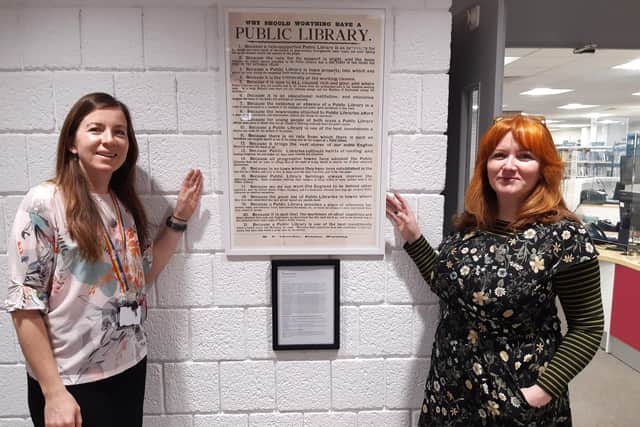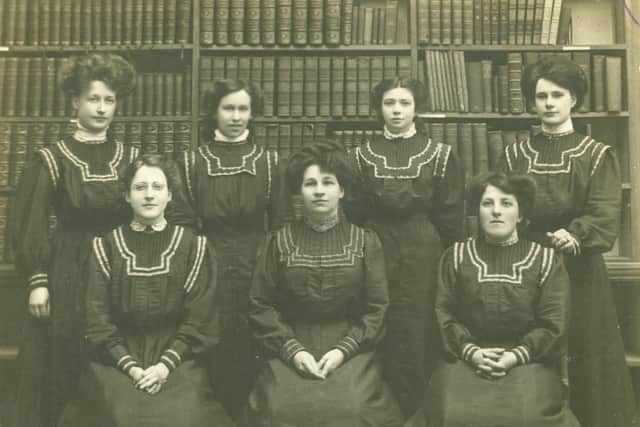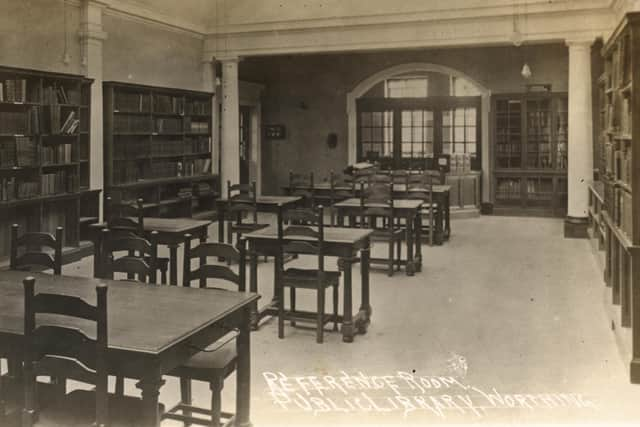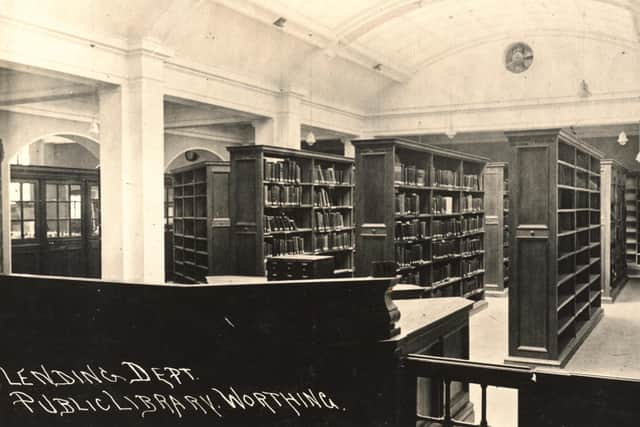Poster campaign: 21 reasons why Worthing should have a public library
and live on Freeview channel 276
The original, which was displayed all around the town, has been investigated by Brighton University academic Dr Annebella Pollen and she has kindly donated a print reproduction for the new-look Worthing Library.
Librarian Amy Perry said: “This piece of the past reminds us of the importance of free universal services for all and an accessible place for our whole community.”


Advertisement
Hide AdAdvertisement
Hide AdThe framed poster has been hung by the entrance to the first-floor library, a space which now includes computers, an area dedicated to local history, a young people’s area, a two-person meeting pod and an enclosed quiet area.
Annebella said: “The poster was from a template that was being used all around the country but adapted to Worthing. They had to have the agreement of the town because it was to be paid for out of the rates. A lot of the messages still stand today.”
A reader in the history of art and design, Annebella came across the poster while doing research at Worthing Museum. It was folded up in the back of a scrapbook, where it had been since the 1890s.
Looking into its history, she found the poster had appeared on hoardings all over Worthing as part of an ambitious campaign spearheaded by young solicitor Robert W. Charles.


Advertisement
Hide AdAdvertisement
Hide AdProduced in a bright type by W. F. Churcher, a town councillor and the editor of the Worthing Gazette, the poster sought to harness the growing energy of the so-called public library movement for the benefit of the town.
Annebella said: “There was a steady growth in libraries from the 1850s but Worthing still didn’t have one. There was a worry that reading was bad for people.”
The Public Libraries Act of 1850 had established the conditions for free libraries but Worthing was slow to respond and in February 1892, Robert, as a newcomer to the town, determined to remedy the situation.
The first of 21 reasons why Worthing should have a public library states: “Because a rate-supported public library is as necessary for the mental and moral health of the citizens as good sanitary arrangements, water supply, and street lighting are for the physical health and comfort of the people.


Advertisement
Hide AdAdvertisement
Hide AdOthers say: “Because it is open to all classes, rich and poor, and where public libraries exist they are actually used by all classes, from the professional man to the humblest working man.
“Because the existence or absence of a public library in a town is being accepted as a standard of the intelligence and public spirit manifested in that town.
“Because for young people of both sexes a public library affords some place to which they can go, instead of loitering aimlessly about the public streets.
“Because public libraries cultivate habits of reading and reading brightens life and makes the home more cheerful and attractive.


Advertisement
Hide AdAdvertisement
Hide Ad“Because a public library is one of the best investments which a health resort like Worthing can make.”
Annebella said these were all good points, well made, but, as library historians have pointed out, there was, perhaps surprisingly, no particularly passionate public sentiment for their establishment during the 19th century.
She added: “Small groups of enthusiasts mounted local campaigns around the country but progress was slow and turnout to decision making polls could also be disappointing.
“Most surprisingly, some of the loudest voices were those who opposed library provision. In Worthing, at the time of Charles’s campaign, handbills circulated listing an alternative set of reasons why a public library was not wanted. Claims and counterclaims played out through bill posters and leaflets distributed around Worthing, but also in letters to the local press, and in the public meeting organised to promote a public vote on the matter.”
Advertisement
Hide AdAdvertisement
Hide AdThe typhoid epidemic in 1893 put the campaign back but a public library was finally established in Worthing in 1895. It took 13 more years, however, before a dedicated building was constructed, thanks to much further campaigning by librarian Marian Frost. This included a museum and was the building that is now Worthing Museum and Art Gallery.
The current Worthing Library was opened in 1975 and it has recently been refurbished as a vibrant community hub, including Worthing Registration Office, children and family services, the FindItOut centre for teenagers and various meeting spaces.
Also in the news: Martian meteorites and Moon samples rain down on Worthing schools
